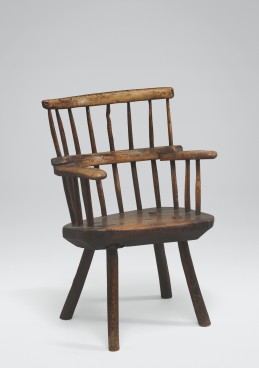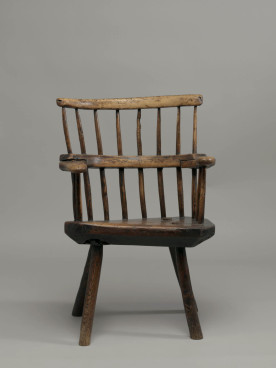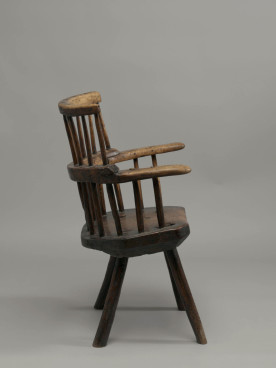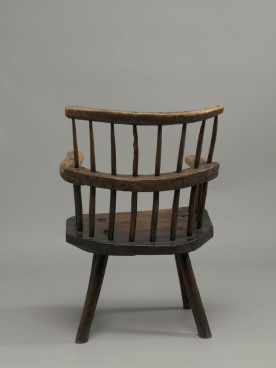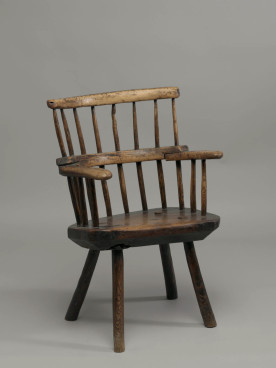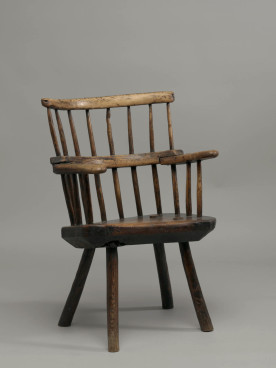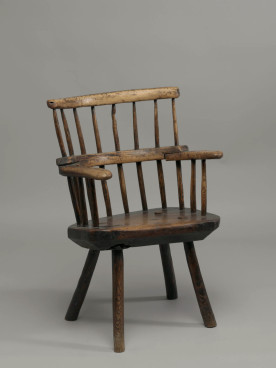‘Primitive’ comb- back Windsor chair, c.1780–1820
Ash and elm
Adam Bowett Catalogue (19/08/2012)
Description
A Windsor chair, late eighteenth/early nineteenth century, of ‘primitive’ construction, with a comb back, three-part arm and thick seat with staked legs.
Dimensions
H: 34 ” (86 ½ cm) Seat height: 18 ” (46 cm) W: 23 ½ ” ( 60 cm) D: 20 ” (51 cm)
Materials
Elm, ash and unidentified hard wood
Dating criteria
Dating this type of ‘primitive’ chair is notoriously difficult. The use of relatively perishable woods such as ash and elm suggests the chair is unlikely to be as old as first appears. The green painted finish is typical of that found on late 18th and 19th century rural Windsor chairs, so a date range 1780-1820 might be appropriate.
Construction
Seat is one piece of elm about three inches thick; the legs are socketed into it and are fox-wedged from the top. The arm bow has a three-part construction; the joints between the arm sections and the centre are overlapped and secured by underarm spindles doweled through both parts and wedged, and also pegged from the side. The top rail is raised on eight hand-drawn spindles which are through-socketed and wedged into the comb, then passed through the arm bow and through-socketed in to the seat
Condition
A strongly made chair and evidently well used. There are traces of green paint on the seat which suggest that it was once painted but it is now largely bare of paint. It is heavily patinated in some places, particularly on the underside of the comb, arm and seat which are thickly coated with layers of varnish dirt etc. Other areas are relatively free of surface accretions, suggesting that they have been cleaned or stripped, perhaps more than once. There are screw repairs to the joints between the centre and side arm bows. Left side arm bow has split where the final spindle passes through it and has been wedged. Legs have worked loose and up through the seat.
Additional remarks
So-called ‘primitive’ Windsors occur in many places in the British Isles; the term essentially describes chairs made in the Windsor fashion but not by a professional chair-maker or woodworker. The shaping of parts and construction tends therefore to be fairly crude, usually without the use of a lathe, and the proportions tend to be rather low. They were probably made over a very long period and can often have a deceptive appearance of great age.

